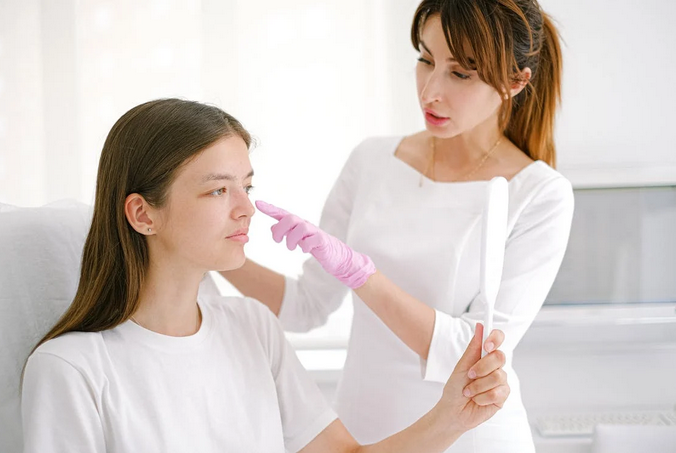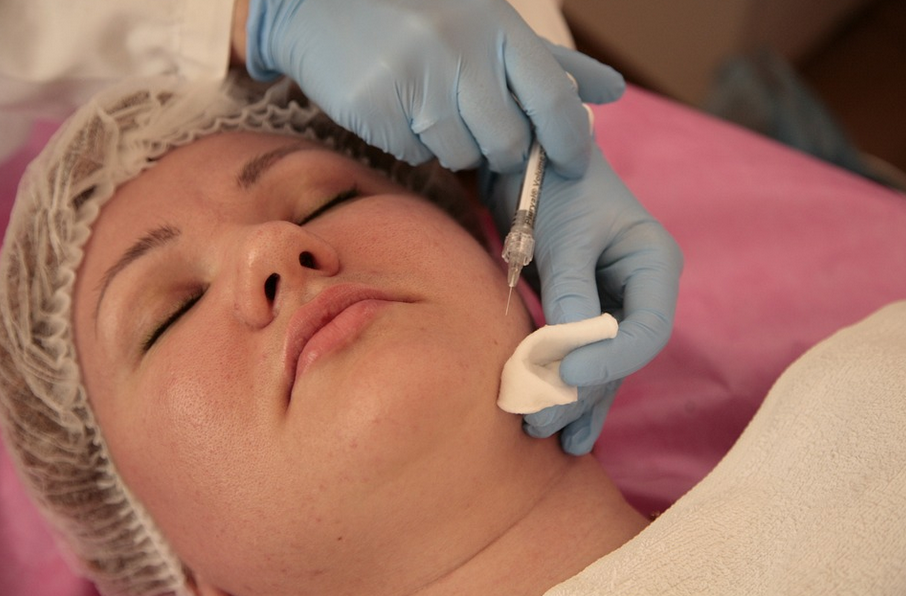Laser Skin Resurfacing: Essential Facts Everyone Should Know
If you’ve ever wished for smoother, younger-looking skin, laser skin resurfacing might just be the answer. This innovative cosmetic procedure has become a powerful solution against wrinkles, sun damage, and uneven skin tone. But what exactly is it? How does it work? And who can benefit from this treatment?
In this post, we’ll peel back the layers of laser resurfacing and explore everything you need to know before deciding. Whether you’re curious about the science behind the technology or considering your options for recovery and aftercare, we’ve got you covered. Let’s dive into essential facts that will help illuminate your path toward radiant skin.
The Science Behind Laser Resurfacing
Laser skin resurfacing utilizes focused beams of light to target specific layers of the skin. This precise approach encourages cell regeneration, helping to diminish imperfections like fine lines and acne scars. The procedure typically involves two types of lasers: ablative and non-ablative. Ablative lasers remove damaged skin layers entirely, promoting healing from within. Non-ablative lasers stimulate collagen production without disrupting the outer layer, making it a gentler option for mild issues.
The laser energy penetrates deep into the dermis during treatment, triggering a natural healing response. As new collagen forms over time, you’ll notice firmer and smoother skin emerging. This advanced technology allows dermatologists to customize treatments according to individual needs. The result is a tailored experience to achieve desired outcomes with minimal downtime compared to more invasive surgical methods.
Expected Recovery Time and Aftercare
Recovery time after laser skin resurfacing can vary from person to person. Generally, you can expect redness and swelling for several days. This is your skin’s natural response to treatment. Most people heal within one to two weeks. During this period, it’s crucial to follow aftercare instructions closely. Keeping the treated area clean and moisturized helps promote healing. Sun protection is non-negotiable post-treatment. The new skin is sensitive, so applying a broad-spectrum sunscreen daily shields it from harmful UV rays.
Avoid picking at scabs or peeling skin; let nature take its course. It might be tempting, but interfering can lead to scars or changes in pigmentation. Stay hydrated and maintain a healthy diet for optimal recovery. Your body needs nutrients to heal effectively and restore its glow after treatment.

Who Is a Good Candidate?
Laser skin resurfacing can be a transformative option for many individuals. However, not everyone is an ideal candidate for the procedure. Those with specific skin concerns, such as wrinkles, sun damage, or acne scars, often benefit significantly from treatment. If you want to rejuvenate your appearance and improve texture, this procedure is appealing. Candidates should have realistic expectations about outcomes and understand that results vary from person to person. Discussing your goals during a consultation with a qualified practitioner is essential.
People with certain medical conditions or those who are pregnant may need to consider alternatives. Skin type also plays a role; darker skin tones require careful consideration due to potential pigmentation issues post-treatment. Assessing individual needs and health history before moving forward with laser treatments is vital.
Types of Laser Treatments
Laser treatments come in various forms, each targeting specific skin concerns. Ablative lasers remove the outer layer of skin, making them ideal for deeper wrinkles and scars. They promote significant collagen production but require more recovery time. Non-ablative lasers usually …




 A positive atmosphere at home also plays an important role in managing stress effectively. Parents should aim to foster open communication with their children by listening actively without judgment or criticism. Encouraging participation in decision-making processes within the family unit helps build trust while promoting personal growth among individuals.
A positive atmosphere at home also plays an important role in managing stress effectively. Parents should aim to foster open communication with their children by listening actively without judgment or criticism. Encouraging participation in decision-making processes within the family unit helps build trust while promoting personal growth among individuals. Another popular cosmetic dermatology procedure is Botox injections. Injections of Botox are used to reduce the appearance of wrinkles and fine lines temporarily. It works by blocking nerve signals to the muscles in your face, which relaxes them and prevents them from contracting. This reduces the appearance of wrinkles on your skin for up to six months at a time.
Another popular cosmetic dermatology procedure is Botox injections. Injections of Botox are used to reduce the appearance of wrinkles and fine lines temporarily. It works by blocking nerve signals to the muscles in your face, which relaxes them and prevents them from contracting. This reduces the appearance of wrinkles on your skin for up to six months at a time. Laser skin resurfacing is a popular procedure to reduce wrinkles, scars, and sun damage. The laser removes the outer layer of dead skin cells and stimulates collagen production. This can help reduce the appearance of fine lines, acne scars, age spots, and other blemishes. Depending on your particular needs, you may receive ablative or non-ablative laser skin resurfacing. Ablative treatments use lasers to remove the top layer of skin, while non-ablative treatments work below the surface to target deeper layers of skin tissue.
Laser skin resurfacing is a popular procedure to reduce wrinkles, scars, and sun damage. The laser removes the outer layer of dead skin cells and stimulates collagen production. This can help reduce the appearance of fine lines, acne scars, age spots, and other blemishes. Depending on your particular needs, you may receive ablative or non-ablative laser skin resurfacing. Ablative treatments use lasers to remove the top layer of skin, while non-ablative treatments work below the surface to target deeper layers of skin tissue. One risk is that you could develop an ear infection. When your ear is clogged, it provides a perfect environment for bacteria to grow. This can lead to an infection of the outer ear (otitis externa) or middle ear (otitis media). Ear infections can be very painful, and if left untreated, they can cause serious problems.
One risk is that you could develop an ear infection. When your ear is clogged, it provides a perfect environment for bacteria to grow. This can lead to an infection of the outer ear (otitis externa) or middle ear (otitis media). Ear infections can be very painful, and if left untreated, they can cause serious problems. Lastly, the most serious risk of ignoring clogged ears is hearing loss. When your ear is clogged, it prevents sound waves from reaching your eardrum. This can cause permanent damage to your eardrum and lead to hearing loss. If you are at risk for hearing loss, it is important to see a doctor immediately so they can help prevent the damage from worsening.
Lastly, the most serious risk of ignoring clogged ears is hearing loss. When your ear is clogged, it prevents sound waves from reaching your eardrum. This can cause permanent damage to your eardrum and lead to hearing loss. If you are at risk for hearing loss, it is important to see a doctor immediately so they can help prevent the damage from worsening. Fish is a good source of essential nutrients, including protein, omega fatty acids, and vitamins D and B12. These nutrients are necessary for maintaining overall health and preventing chronic diseases.
Fish is a good source of essential nutrients, including protein, omega fatty acids, and vitamins D and B12. These nutrients are necessary for maintaining overall health and preventing chronic diseases.  Omega-fatty acids are also crucial for brain health. The omega-three fatty acid DHA is a vital part of the outer layer of every cell in your body, including nerve cells and those found in the eyes and brain.
Omega-fatty acids are also crucial for brain health. The omega-three fatty acid DHA is a vital part of the outer layer of every cell in your body, including nerve cells and those found in the eyes and brain.  Exercises not only keep the diseases away but also makes the heart stronger. A strong heart ensures the cardiovascular function smoothly; it reduces the heart’s plaque to make it work efficiently. When the heart is more robust, it pumps enough blood at one beat; thus, the heart rate is lower.
Exercises not only keep the diseases away but also makes the heart stronger. A strong heart ensures the cardiovascular function smoothly; it reduces the heart’s plaque to make it work efficiently. When the heart is more robust, it pumps enough blood at one beat; thus, the heart rate is lower. Exercises decrease the fats in your body while increasing the muscles. The more muscles you have, the more your stomach contracts, therefore, needing less food. Exercises also increase the metabolism rate, thus, ensuring that more fats and calories get burned.
Exercises decrease the fats in your body while increasing the muscles. The more muscles you have, the more your stomach contracts, therefore, needing less food. Exercises also increase the metabolism rate, thus, ensuring that more fats and calories get burned. One of the most beneficial water sports for your health is surfing. If you’ve ever wondered why people who surf have great bodies, it is because surfing is a full body workout. It may just look like standing on a board and riding waves to an outsider’s point of view, but it is so much more than that.
One of the most beneficial water sports for your health is surfing. If you’ve ever wondered why people who surf have great bodies, it is because surfing is a full body workout. It may just look like standing on a board and riding waves to an outsider’s point of view, but it is so much more than that. Snorkeling is basically swimming underwater with a mask and a breathing instrument. The upper hand that snorkeling has on swimming is that it is underwater, so you can experience underwater life. It is a great recreational water sport that is very beneficial when it comes to your health.
Snorkeling is basically swimming underwater with a mask and a breathing instrument. The upper hand that snorkeling has on swimming is that it is underwater, so you can experience underwater life. It is a great recreational water sport that is very beneficial when it comes to your health. The best kratom grows in Southeast Asia, and we know a little about its use outside of Thailand, Malaysia, Burma. The reason is that although people used it in major cities, its use is more common in rural areas.
The best kratom grows in Southeast Asia, and we know a little about its use outside of Thailand, Malaysia, Burma. The reason is that although people used it in major cities, its use is more common in rural areas. Most of the report is positive and has an emphasis on a sense of euphoria, although constant use can lead to addiction in light psycho-physical abuse and irresponsible consumption. Negative reports that we read are associated with excessive doses, in patients who are dependent on the plant or combination with other drugs.…
Most of the report is positive and has an emphasis on a sense of euphoria, although constant use can lead to addiction in light psycho-physical abuse and irresponsible consumption. Negative reports that we read are associated with excessive doses, in patients who are dependent on the plant or combination with other drugs.…